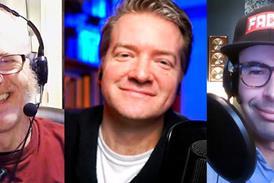Following a recent Big Conversation, journalist Heather Tomlinson explores near-death experiences
The term “near-death experience” (NDE) is sometimes used for any brush with death, for example, a near miss when driving on the motorway or being very ill. However, it usually refers to something much more specific. It is a technical term for a particular phenomenon when a person who is near-death – often clinically dead for a short time – experiences a powerful, otherworldly sensation that transforms their lives. They often believe they have been in heaven, or at least in a realm that is separate and distinct from life on Earth.
NDEs have been scientifically studied because they are surprisingly common and have a lot of similar features, even in people of different religions and cultures. They have often been cited as proof of the afterlife. That’s certainly the view of those who have them – they become convinced that our soul continues to live after we “die”.
As the Christian apologist and neuroscience researcher Sharon Dirckx says in a recent ‘Big Conversation’ on the subject, a NDE typically has these qualities:
Being “out of body”
NDEs have a common thread of feeling as though they are no longer in their physical body. This can just be within the same room – for example, floating on the ceiling and watching what is happening to their physical body underneath. Some experiencers have even recalled what doctors were doing and saying while clinically “dead”.
Others feel that they travel further than just the room. Often moving very fast through a tunnel, people experience other realms that they are certain are not the material world as we understand it. Other than the negative experiences described below, they are usually very good places, with beautiful flowers or scenery, and are interpreted to be heaven.
Read more:
Do consciousness and near-death experiences point to an afterlife?
Is there more to death than this?
Is there evidence for an afterlife?
What happens when you die?
No pain
Whether near to the physical body or far away, the person experiences a blissful feeling, usually of profound levels of peace, love and wellbeing. Any pain they had felt in the body, or mental anguish, is no longer present.
Being of light
It’s common to see a powerful and loving being that is often interpreted to be Jesus or an angel. This person is said to emanate love and compassion, usually with no judgement. People who had been atheists are often convinced that they had met God, and their beliefs change after the experience.
Seeing dead relatives
It’s common for experiencers to see relatives or friends that have died.
A point of no return
Experiencers often have an understanding that if they progress, they won’t be able to go back to Earth. Often they want to stay in the afterlife as it is so blissful, but are told they have to go back as they have work to do. Sometimes they believe they are given a choice.
Life review
Although the person often feels unconditional love and acceptance from God, it is common to see their entire life played back in front of them, especially how they interacted with other people and made them feel. Sometimes this is seen in a non-judgemental way, in others there is clear regret or concern at any unloving actions.
Transformation of life on Earth
Most people who have NDEs are never the same again. Adjusting to normal life can be difficult, and it sometimes involves changes in career and lifestyle. Usually they want to be more loving and caring towards others. People are less materialistic and more spiritual.
How they relate to religion can vary. A substantial number start to practice religion more wholeheartedly. Others find traditional religion too restrictive or judgemental. But overall, concern over spiritual matters increases.
Get access to exclusive bonus content & updates: register & sign up to the Premier Unbelievable? newsletter!
Negative NDEs
Although the experiences are usually characterised by “seeing the light”, some are reported to be very negative. They usually take one of two forms – a dark void that is empty, hopeless and eternal, or a more stereotypical “hellish” experience where there are evil beings and suffering. This is often followed by an experience of redemption or of being saved by God in some way, who gives them another chance.
What can we learn from NDEs?
Some say they prove the afterlife. For example, the sceptical neurosurgeon Eben Alexander came back from his experience and wrote a book titled ‘Proof of Heaven’.
Some Christians argue that they support their beliefs. Yet others argue that NDEs do not agree with what the Bible says, and approach the subject with caution.
At the very least, it seems that these experiences raise important questions about how our mind and brain interact.
Dr Dirckx believes that NDEs don’t provide “proof of heaven” but that they are evidence that consciousness can survive independently of the brain. “If we are just our brains, they pose more of a challenge to interpret – arguably they’re impossible,” she says in this ‘Big Conversation’. “If there’s truly no detachable signal in the brain [during the NDE] then they’re a complete anomaly.”
To watch or listen to the whole Big Conversation episode between Christian speaker and former neuroscientist Dr Sharon Dirckx, author of Am I Just My Brain?, and atheist philosopher Dr Emily Qureshi-Hurst, author of God, Salvation, and the Problem of Spacetime, click here.
Heather Tomlinson is a freelance journalist. You can find her on twitter @HeatherTomli or through her blog http://www.heathert.org























